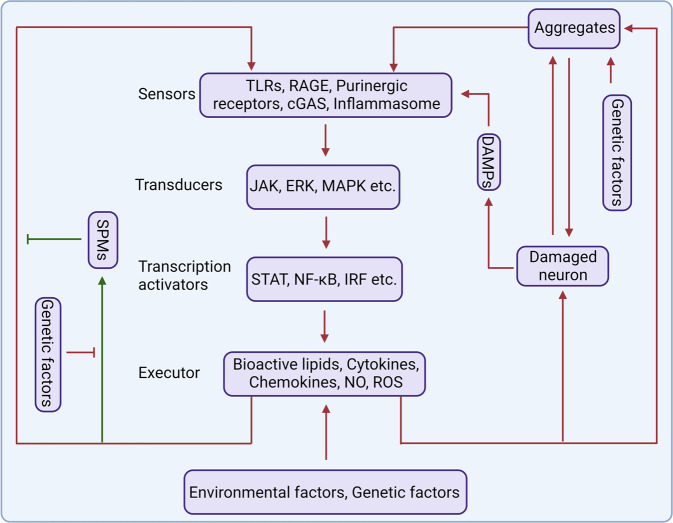Fig. 1.
The role of inflammation in neurodegeneration. Inflammatory receptors on the surface of immune cells, especially glial cells, act as sensors to detect abnormality in the human body. Stimulation of the sensors by DAMPs or PAMPs, such as protein aggregates, virus, bacteria, leads to activation of signal transducers which then activate transcription activators. Subsequently, activated transcription factors induce the secretion of inflammatory mediators which further amplify inflammation. Generally, activated glial cells should kill the dangers and then induce an inflammation resolution process to clear the DAMPs or PAMPs and stop inflammatory response. However, owing to some reasons, activated immune cells fail to resolve inflammation and generate chronic inflammation which cause neuronal toxicity and enhance protein aggregation. Protein aggregates and DAMPs released from damaged neurons further amplify neuroinflammation and aggravate disease. Some protein aggregates, such as TDP-43 and α-synuclein, may even invade mitochondria which can induce death of neuron directly

